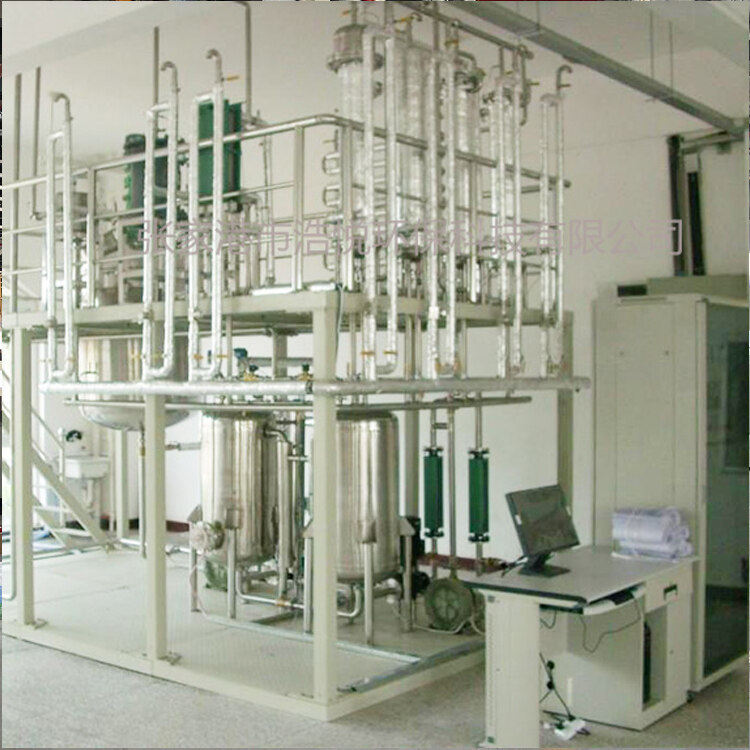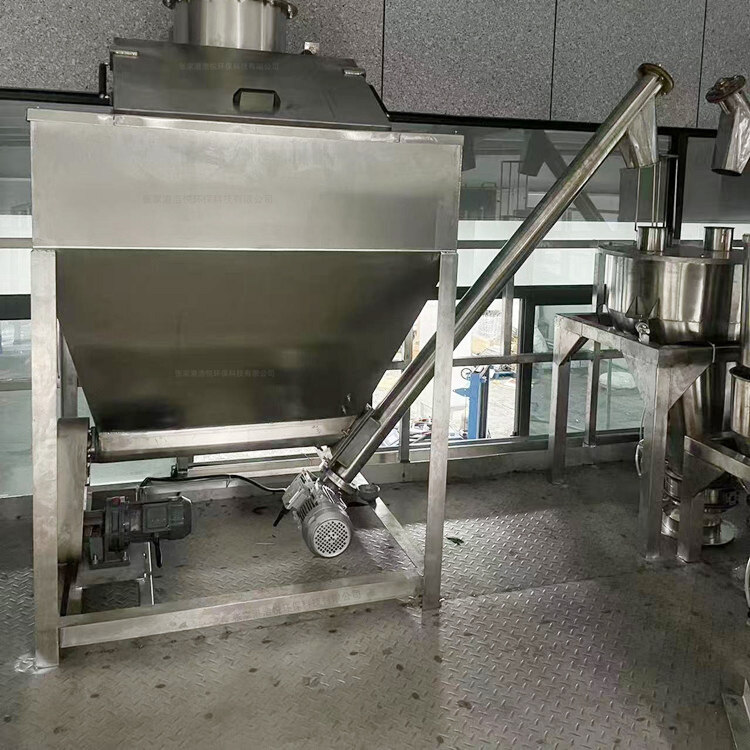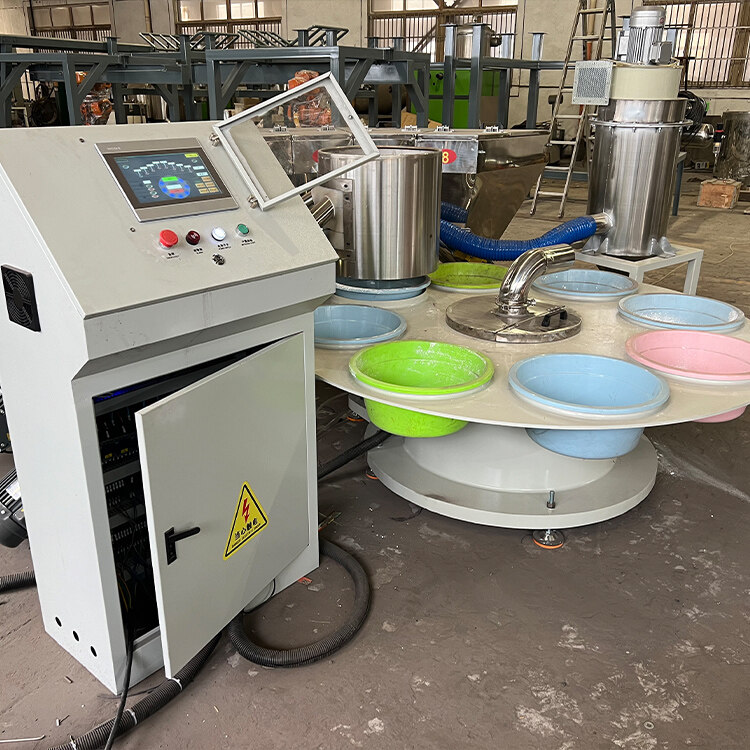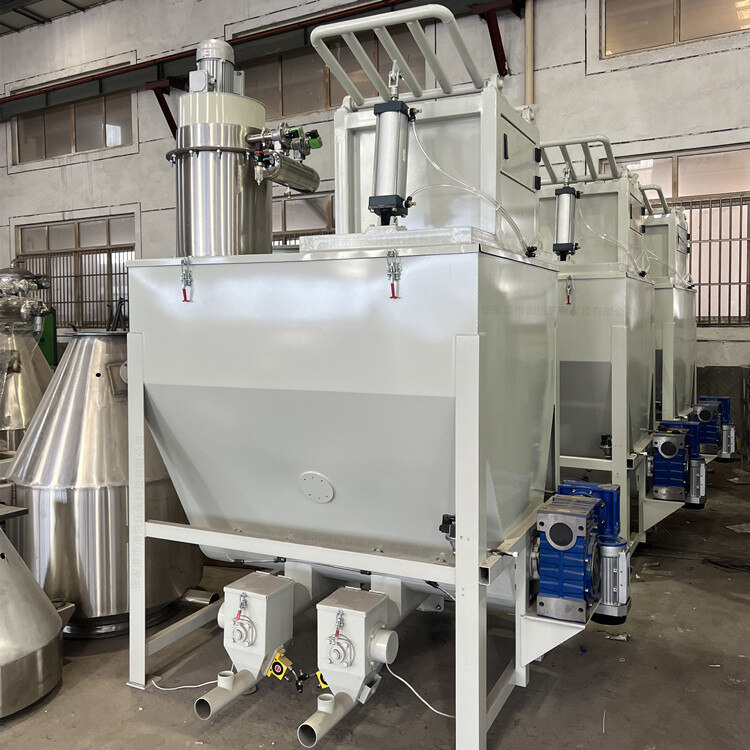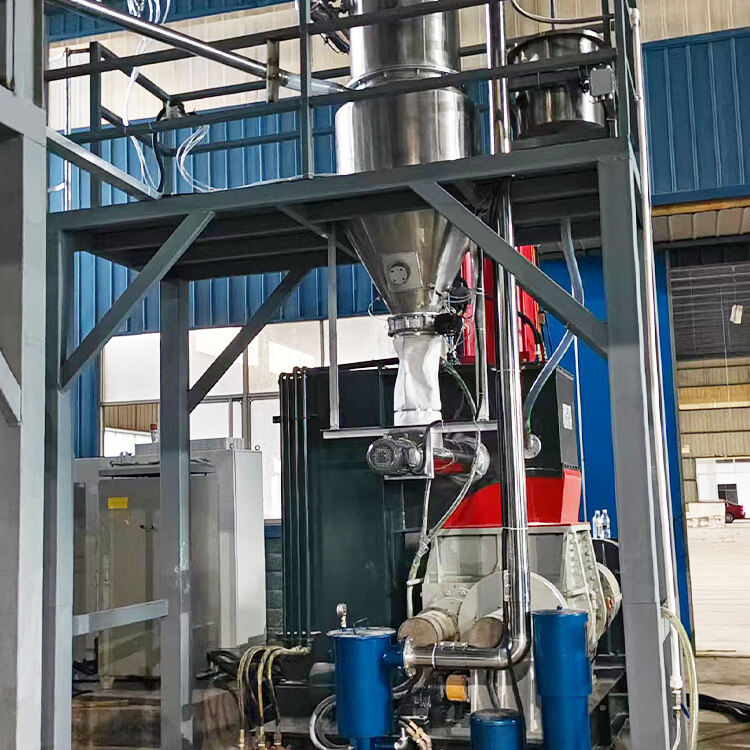- Introduction to automatic batching machine and fully automatic batching machine equipment
- The powder metering system tells you about the introduction of the mixing and drying machine
- 1000kg vacuum feeding machine
- Fully automatic small material batching system
- Research on Innovation of Automatic Weighing Machine Technology
- Design and operation of automatic batching system using PLC, industrial computer and frequency converter
Liquid delivery system
- Category:Automatic metering and conveying equipment
- Hits:113次
- Release Date:2025-06-27
- Share:
- Inquiry
- Details
In modern industrial production and daily life, liquid transportation systems play an important role in transportation, and their performance directly affects production efficiency, product quality, and convenience of life. From the precise transportation of chemical raw materials to the stable operation of urban water supply systems, from the production and transportation of food and beverages to the transportation of oil products in the energy sector, liquid delivery systems have become a "vascular network" that ensures the normal operation of various industries with diverse technological means and flexible configuration methods.
1、 Working principle of liquid conveying system
The liquid delivery system is mainly based on the principle of energy conversion, which overcomes the resistance during the flow of liquid through external forces and achieves the transfer of liquid from one place to another. Its core is to convert mechanical energy, electrical energy, and other forms of energy into the kinetic and potential energy of liquids, and promote the flow of liquids in pipelines or containers.
Taking the most common pump delivery as an example, centrifugal pumps apply centrifugal force to the liquid through the high-speed rotation of the impeller, allowing the liquid to gain kinetic energy and be thrown out along the impeller blades. After entering the pump casing, the speed decreases, and some of the kinetic energy is converted into pressure energy, thereby achieving the lifting and delivery of the liquid; Positive displacement pumps (such as gear pumps and screw pumps) rely on the periodic changes in the working chamber volume to suck in and discharge liquid, and directly do work on the liquid through the movement of mechanical components. In addition, in some specific scenarios, transportation can be achieved by utilizing the liquid's own gravity (such as gravity flow pipelines), gas pressure (such as pneumatic conveying of liquids), and other methods.
2、 The core composition structure of the system
(1) Power equipment
Centrifugal pump: It is the most widely used liquid transfer pump, characterized by high flow rate, simple structure, and easy operation. Suitable for transporting low viscosity liquids such as clean water and chemical solutions, widely used in the fields of petrochemicals, water supply and drainage. Its performance parameters mainly include flow rate, head, speed, and power, which can be adjusted by changing the impeller diameter, speed, and other methods.
Positive displacement pump:
Gear pump: Composed of a pair of meshing gears, the liquid is squeezed from the suction port to the discharge port through the rotation of the gears, suitable for conveying high viscosity liquids such as lubricating oil, ink, etc.
Screw pump: Utilizing the spatial variation of the mutual meshing of screws to transport liquids, it has the advantages of uniform flow rate, stable pressure, and low noise. It is commonly used to transport high viscosity liquids containing solid particles, such as food slurry, mud, etc.
Other types of pumps include axial flow pumps (suitable for high flow, low head applications such as agricultural irrigation), reciprocating pumps (commonly used in high-pressure, low flow fine chemical fields), etc.
(2) Transportation pipeline
Pipeline material: According to the properties and usage requirements of the transported liquid, common pipeline materials include metal pipelines (such as stainless steel and carbon steel) and non-metal pipelines (such as plastic and ceramic). Stainless steel pipes are corrosion-resistant and have good hygiene performance, commonly used in the food and pharmaceutical industries; Carbon steel pipes have high strength and low cost, suitable for industrial water supply and drainage, and oil transportation; Plastic pipes (such as PVC, PE) are lightweight and have strong corrosion resistance, and are widely used in civil water supply and drainage as well as chemical liquid transportation.
Pipeline accessories: including valves (such as globe valves, gate valves, ball valves, regulating valves, etc.) used to control the flow rate, pressure, and direction of liquids; Elbows, tees, reducers, etc. are used to change the direction of pipelines and connect pipes of different diameters; Compensators are used to absorb the thermal expansion and contraction deformation caused by temperature changes in pipelines, preventing pipeline damage.
(3) Control system
Automated control: Real time monitoring of liquid pressure, flow rate, liquid level and other parameters through sensors (such as pressure sensors, flow sensors, liquid level sensors), transmitting data to programmable logic controllers (PLC) or distributed control systems (DCS). The control system automatically adjusts the pump speed and valve opening based on preset parameters and algorithms, achieving precise control of liquid transportation.
Remote monitoring: With the help of IoT technology, operators can remotely monitor the operating status of liquid delivery systems through terminal devices such as computers and mobile phones, adjust parameters and diagnose faults, and improve management efficiency and response speed.
3、 Classification of Liquid Transport Systems
(1) Classified by transportation method
Pump conveying system: Relying on pumps to provide power is the most common conveying method, suitable for various working conditions and liquid types, and can achieve long-distance, high head conveying.
Gravity conveying system: utilizing the gravity of the liquid itself to form natural flow in the pipeline, without the need for additional power equipment, suitable for situations with terrain differences, such as urban sewage gravity discharge pipelines and mountainous water conservancy irrigation systems.
Pressure conveying system: It uses gas pressure (such as compressed air) to push liquid to flow in pipelines, and is commonly used for conveying some special liquids, such as flammable, explosive, high viscosity liquids, and liquids that need to avoid contact with air.
(2) Classified by application field
Industrial liquid transportation system: widely used in industries such as chemical, petroleum, power, metallurgy, etc., for transporting raw materials, intermediate products, and finished products, such as proportioning transportation of chemical raw materials, long-distance pipeline transportation of petroleum, and transportation of circulating water in power plants.
Civil liquid transportation system: mainly includes urban water supply system, drainage system, building internal water supply and drainage system, etc., to ensure residents' domestic water supply and sewage discharge.
Special liquid delivery system: Designed specifically for liquids with special properties, such as food and beverage, medicine, liquid metal, etc., to meet special requirements for hygiene, safety, temperature control, etc.
4、 Typical application scenarios
(1) Chemical industry
In chemical production, liquid conveying systems are used to transport various corrosive, flammable, and explosive chemical raw materials and products. For example, in petrochemical enterprises, crude oil is transported through pipelines to refining units for processing, and then the finished oil is transported to storage tanks or sales terminals; In the field of fine chemicals, high-precision metering pumps are used to precisely control the ratio of various chemical reagents, ensuring stable product quality.
(2) Food and beverage industry
Food and beverage production requires extremely high hygiene standards, and the liquid delivery system uses food grade stainless steel pipes and sanitary pumps to prevent liquid contamination. In the beverage production line, raw materials such as water, syrup, and juice are transported in proportion to the mixing equipment, and then transported through pipelines to the filling machine for filling; In dairy processing, milk is transported from the milk tank to various processes such as sterilization, concentration, and packaging.
(3) Energy industry
In the field of energy, liquid transportation systems undertake the transportation tasks of oil, natural gas, liquid fuels, etc. Long distance oil pipelines transport crude oil extracted from oil fields to refineries, while gas pipelines transport natural gas to urban gas supply systems; In thermal power plants, the circulating water delivery system delivers cooling water to equipment such as turbines for heat exchange, ensuring the normal operation of the units.
(4) Municipal Engineering
The urban water supply system uses water pumps to lift and transport water from the water source to thousands of households, and the purified water is distributed to various water points through a pipeline network; The drainage system collects domestic sewage and rainwater, transports them through pipelines to the sewage treatment plant for treatment, and discharges them after meeting the standards.
5、 Technological advantages and development trends
(1) Technical advantages
Efficiency: By selecting the appropriate pump type and pipeline configuration, efficient liquid transportation can be achieved, meeting the flow and head requirements under different working conditions.
Flexibility: The layout and parameters of the conveying system can be flexibly adjusted according to production processes and usage needs to adapt to diverse production and usage scenarios.
High degree of automation: The automated control system achieves precise control and remote monitoring of liquid transportation, reduces manual intervention, and improves production efficiency and safety.
(2) Development Trends
Intelligent upgrade: Introducing technologies such as artificial intelligence and big data analysis to achieve intelligent diagnosis, predictive maintenance, and optimized operation of liquid transportation systems, improving system reliability and stability.
Energy saving and environmental protection: Developing efficient and energy-saving pump products and optimizing pipeline design to reduce energy consumption; Adopting environmentally friendly pipeline materials to reduce pollution to the environment.
Safety and reliability improvement: Strengthen safety monitoring and protective measures for the conveying system, develop explosion-proof, leak proof, and corrosion-resistant technologies to ensure the safety of the liquid conveying process.
Integration and modularization: Integrating the conveying system with other production equipment to form an integrated solution; Adopting modular design for easy installation, maintenance, and upgrading.
As an important support for modern industry and life, liquid transportation systems will play an important role in more fields with the continuous advancement of technology, and develop towards a more intelligent, efficient, environmentally friendly, and safe direction.


